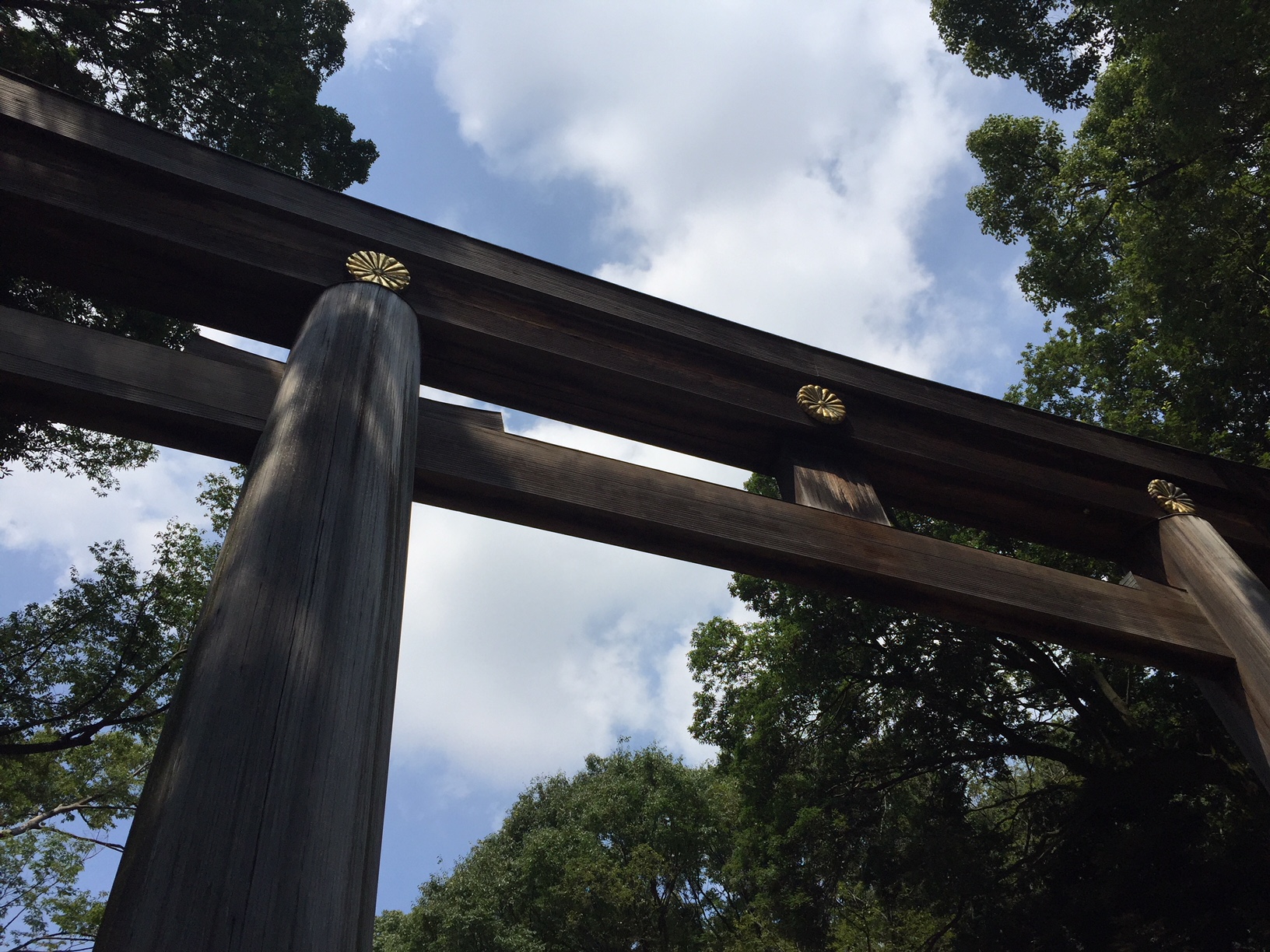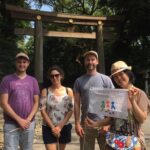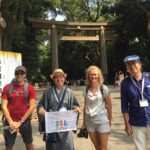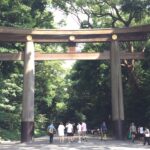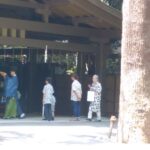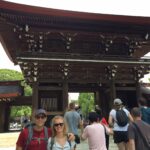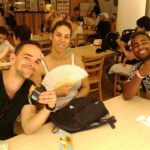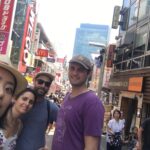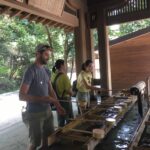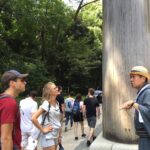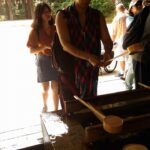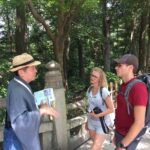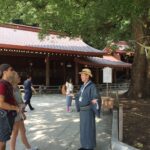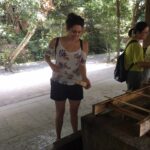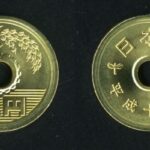Thank you for joining our tour to Meiji Shrine and Harajuku on Aug. 4th.
We welcomed 8 guests in total from Australia, Canada, UK, Italy and Poland. We made 3 groups and had more mutual communication between guests and a guide. It was really hot, today. 32℃ (90℉), Summer sunshine, almost no wind. but we still could feel the cool forest in the morning, too.
The tour started at the gate of Meiji Shrine, walked into its forest and arrived at Main Shrine Building. After the small rest, we moved to Harajuku area and reached out Omote Sando, Champs Elysees in Japan. We hope our guest enjoyed there 2 completely different attractive areas in the center of Tokyo metropolis. In addition, we exchanged a lot of questions and answers, and were inspired by some of them. I really love it.
When visiting shrines and temples, including Meiji Jingu Shrine, we will make small offering. At that time, the famous thing as the auspicious amount is “5 yen”. One of our guests knew that. One reason is that “5 yen” is read as “Goen” in Japanese. Because this “Goen” has the same pronunciation as “Close relationship”, the 5 yen coin means that you have a good relationship with gods, deities or buddha.
In addition, this 5-yen coin is a rare coin that has a hole in the world along with a 50-yen coin. The reason why the holes are made is (1) to distinguish it from other coin types, (2) to prevent forgery, (3) to save raw materials. The 5yen coin started in 1948 had no holes, but were changed to holes in the following year in response to the sharp rise of the material in prices at that time right after World War II. Because the hole is open, it is also said that good luck is good prospects.
By the way, the 5 yen coin is the only Japanese denomination coin currently being issued, with no denomination in Arabic numerals and written only in Chinese numerals. It cannot be said that it is kind to no Japanese guests, but is it rare for such coins, too?
Looking closely at the 5 yen coin, the surface of rice ears, water (water surface, multiple horizontal lines at the root of rice ears), and gears (around holes) represent agriculture, fisheries industry, and manufacturing industry, respectively. It represents Japan growing towards democracy. At the time of publication, Japan was in reconstruction period after World War II, and it contained the thoughts of its development as a major industrial and democratic country at that time.
When visiting Japan and seeking a close relationship in a shrine or temple, please prepare this distinctive “5 yen” at hand. On the other hand, our tour is free. The four tours of “East Gardens of the Imperial Palace”, “Asakusa”, “Ueno” and this “Meiji Shrine and Harajuku” are waiting for your “close relationship = friendship” with you.
For more information about our tour, please visit our Meiji Shrine and Harajuku tour, Facebook, and TripAdvisor page!

(Posted by Toyo)

